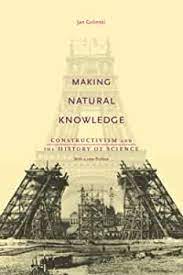Pickering, A. (1995). The Mangle of Practice: Time, Agency, and Science. Chicago and London: University of Chicago Press.
Andrew Pickering takes a look at science as a practical work. While there are many philosophical arguments abounding in regards to science in theory, he examines social forces that shape and are shaped by the processes in scientific decision making.
Pickering offers some clarification around the word ‘mangle’. He realizes that this has a different meaning in different places. In America, for example, he notes that the word refers to completely messing something up from the original intention of the thing in question. In his sense mangle means, “practice, understood as the work of cultural extension” (original emphasis) (Pickering, 1995, p. 3). He equates ‘mangle’ with ‘change’. To Pickering, the practice of science is to change it from the theoretical to the real.
He uses some examples to show how process and outcomes don’t always follow original assumptions. One example includes experimentation using a bubble chamber. It includes “the extension of the mechanic field of science, specifically of the development of the bubble chamber as an instrument for experimental research in elementary-particle physics” (Pickering, 1995, p. 37). Pickering shares the history of decisions it took to get to a working model, and the modification of how ‘working’ was eventually defined. Since the chamber ultimately did not create the exact vacuum conceived, the vacuum it did achieve served to define what a bubble chamber is.
Other examples in the book include “hunting the quark,” “constructing quaternions,” and “numerically controlled machine tools.” Each comes with its own history of conception through realization with social compromises along the way. Finally, Pickering finishes with two chapters on conceptual arguments about the kinds of influences and ways to perhaps embrace or reconstruct them. In Chapter 6 for example, he puts some focus on scientific norms as espoused by Robert Merton which have been argued about since their inception. Pickering considers these norms (or any others) as ‘articulations’.










 RSS Feed
RSS Feed